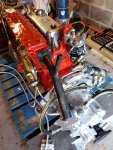Rappey
Well-Known Member
Haha. Shall i wait another two years before i reply.?I posted that comment over 2 years ago. Have you taken that long to think up your reply?
I didn't look at the date.
Like others i log on, click "new posts" and rarely think about the date posted.
Different threads about the same thing leads to repeated information.
I find one thread easier than having to trawl through many.


